Ceramic artist offers a ray of sunlight amid pandemic gloom
Honor Freeman’s slip-cast porcelain soaps, sponges and washcloths yield new layers of meaning as they provide space for quiet contemplation on the pandemic that has occupied global consciousness since early 2020.

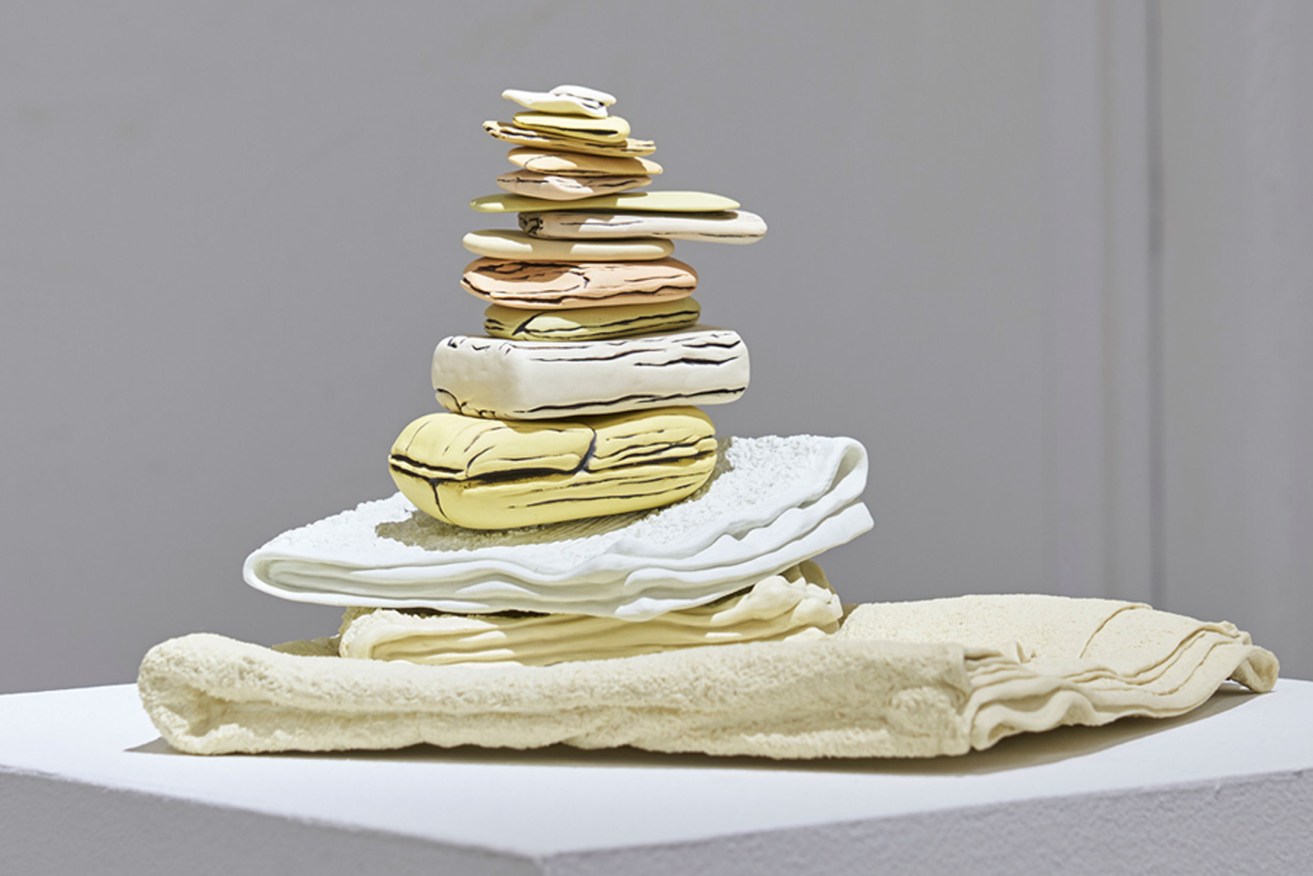
Small Acts of Care: Honor Freeman elevates the banal domestic object into small monuments of meaning in Sunlight for a Pandemic. Photo: Sam Roberts Photography
The deft juxtaposition of Jam Factory Associate Program alumna Honor Freeman’s quiet ceramic objects with Richard’s Disasters – Richard Lewer’s vivid and engaging autobiographical paintings in the larger room of the Hugo Michell Gallery – brings to mind the single, folded, slip-dipped ceramic washcloth placed in front of a large oil painting of a hunting scene for her exhibition Ghost Objects at the Art Gallery of South Australia in 2019. The quiet spirit of the works in Sunlight for a pandemic, arranged in the small, bright corner gallery lying beyond the larger space at Hugo Michell, offers a meditation that is as introverted and implicit as Lewer’s work is extrovert and explicit.
World War I changed the direction of western-influenced art forever. There were artists who felt the work they’d created during more peaceful, innocent times was no longer relevant in the face of such devastation. Whether or not to address the preoccupation of the time and if so, how, will be something artists of every ilk are likely contemplating now, the struggle especially acute if doing so necessitates an about-change in the style of their work.
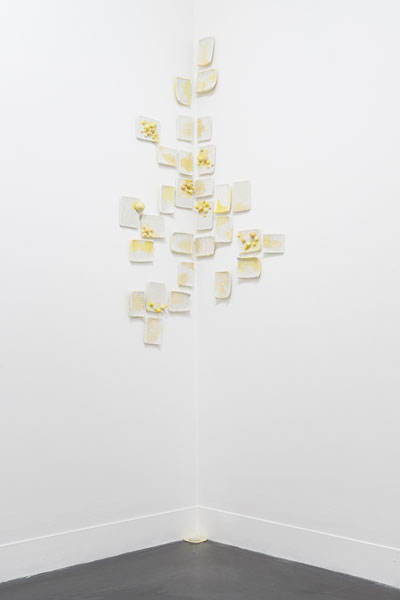
Sunlight and Suds, by Honor Freeman. Photo: Sam Roberts Photography
Freeman’s art, however, seamlessly adapts to the impact of COVID-19. A mark of great art, perhaps, is that it communicates something of the universal experience of being alive, remaining relevant whatever the times. Such art can be found in the humblest of places, and Freeman’s slip-casting process elevates the banal domestic object into small monuments of meaning.
When Freeman’s father died, her mother gave her the final bar of soap he had been using, and for Ghost Objects, she transmuted it in the most literal sense – for the original object is often destroyed during the alchemical firing process – into tactile, luminescent permanence, along with other bars of soap, the cracks from their use transformed into gleaming golden lines in a nod to the Japanese art of kintsugi, which repairs broken ceramics through a careful, slow process applying lacquer and gold.
There is no such gold to be found in the cracks of the bars of soap in this exhibition. In contrast to the sunny solace offered in Freeman’s exhibition title, here, they are dark and dirty-looking, embedded with grime, suggesting destructive microorganisms that might be harboured within. The tension of such a contrast pervades throughout to great effect, mirroring the disparate experiences of people living through the pandemic.
The sunlight of the title offers hope not only through the obvious reference to the life force of our reigning celestial body, but also refers, Freeman says, to Sunlight soap. Lord Lever, founder of Sunlight Soaps, created Port Sunlight, a utopian complex for his workers in Liverpool, England. Their families were housed in picturesque cottages close to the factory where they worked, a situation that could be seen alternately as beneficent and entrapping. The Lady Lever Art Gallery now stands on the site, housing the many pre-Raphaelite paintings so beloved by England’s early 20th-century industrialists, and bought by the huge profits that came from the labour of their workers.
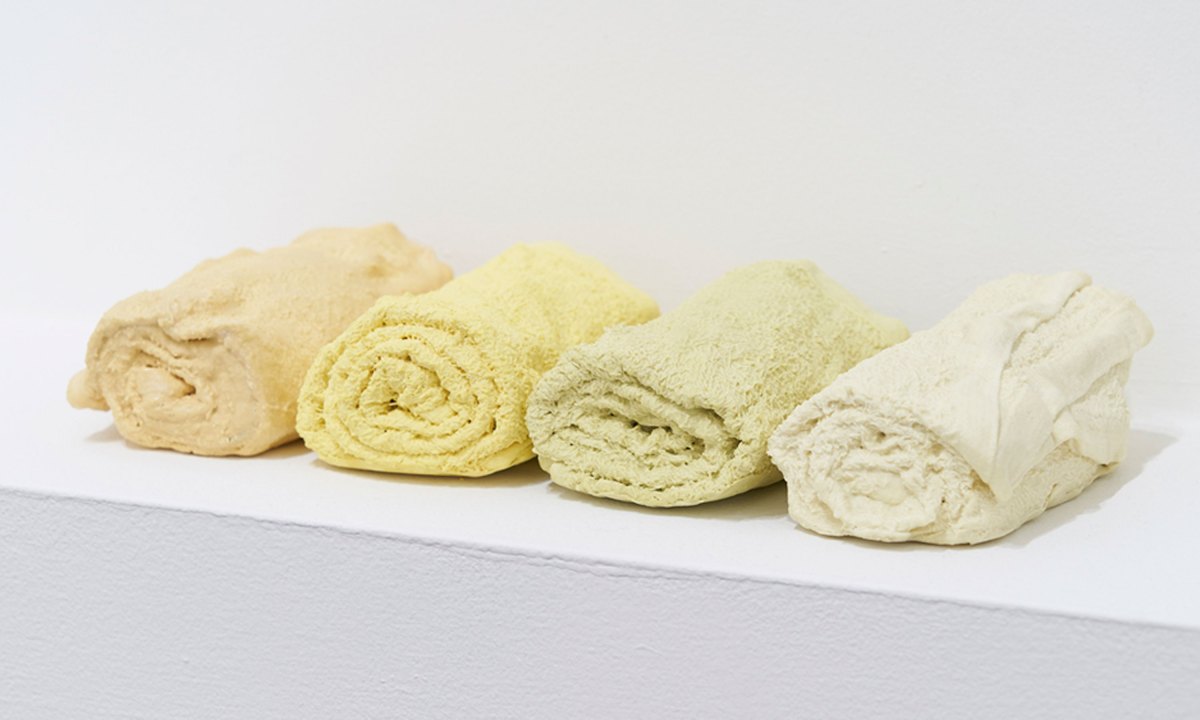
Everyday Luxury, by Honor Freeman. Photo: Sam Roberts Photography
In a nod to the colour of Sunlight soap, Freeman is “embracing a yellow phase: mustard, lemon, chartreuse, citrine, straw, ochre, gold, daffodil, sunshine, canary, saffron, turmeric, honey, sulphur”. Yellow is a colour of joy and hope, of spring and sunlight. Yet it is also associated with cowardice, danger, biliousness, disease. It was once the colour of the international maritime signal flag on plague-ridden ships that needed to be quarantined in port; nowadays, a yellow flag signals the opposite.
In this contrasting way, the yellow palette of the objects in this exhibition suggests soothing lightness and calm while also permeating the room with a sickly sense of infection. In Sunlight and suds (2021), porcelain bubbles in a purulent, iridescence glaze bubble up from an arrangement of kitchen sponges in a narrow display tightly and claustrophobically hung across the two walls forming one corner of the room. The baubles are at once attractive, tactile, and repulsive, suggesting disease; the kitchen sponges, saturated with some unnameable fluid, also look like nourishing bread. On the floor beneath is a small puddle of glistening fluid-made-solid, a plug floating on top, that is both beautiful and nausea-inducing. This theme is continued in Leak (2021), a neat row of eight small sponges, each adorned with a single sink plug that barely contains small glistening pools of purulent-looking ooze.
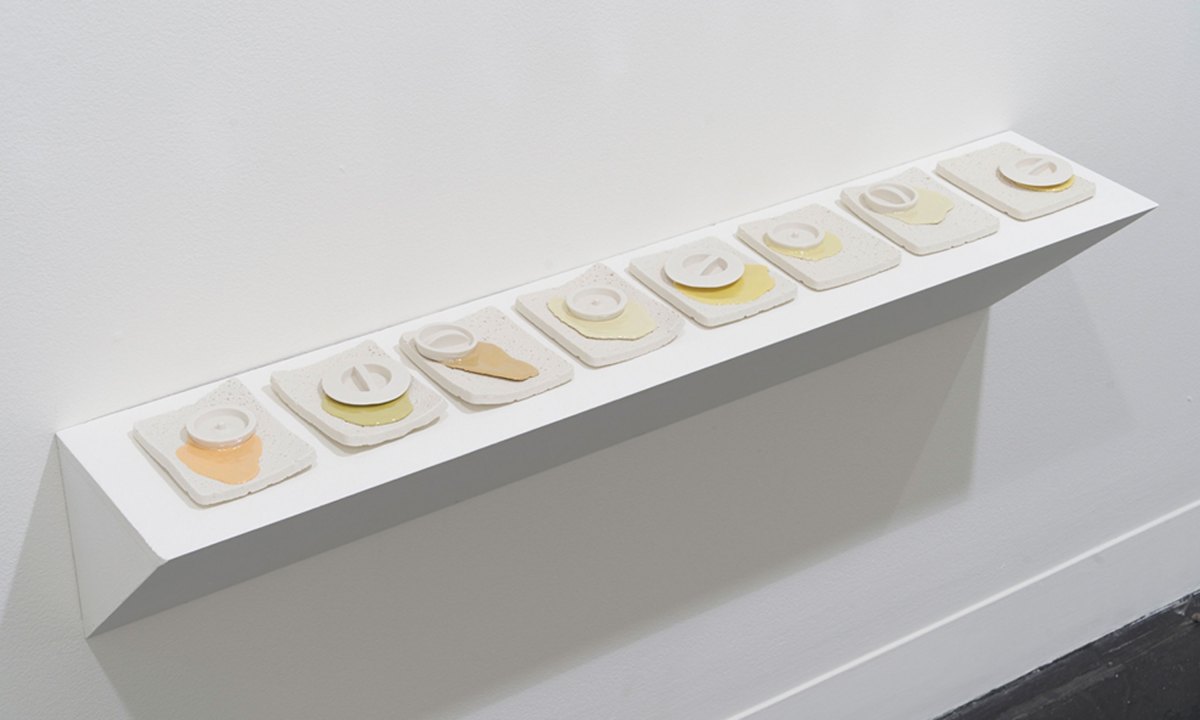
Leak, by Honor Freeman. Photo: Sam Roberts Photography
To transmute the folded and rolled dishcloths of Everyday Luxury and Small Acts of Care into potent objects, Freeman dips them in porcelain slip and shapes them before firing. During the fire, the cloth is burned away – in Ghost Objects this signifies a cremation, but here, it is a kind of purification, an act of sterilisation. The motion of careful folding is solidified and made permanent, a memorialisation of anxieties induced by fear of infection, while also a domestic ritual of calming and grounding.
This transmutation of banal objects, Freeman says, “is a lovely way of making sense of the things you don’t always have the words for”. The exhibition will resonate in different ways, depending on the viewer’s experience, offering up a choice: sunlight and hope, or pestilence and despair? Such art is a reflection on the complexities and dissonances of our time.
The final line of Freeman’s artist’s statement marks her as an optimist. Yellow, she says, is a “fitting colour palette for a pandemic. I’m taking the sunny side. A ray of sunlight to illuminate the gloom”.
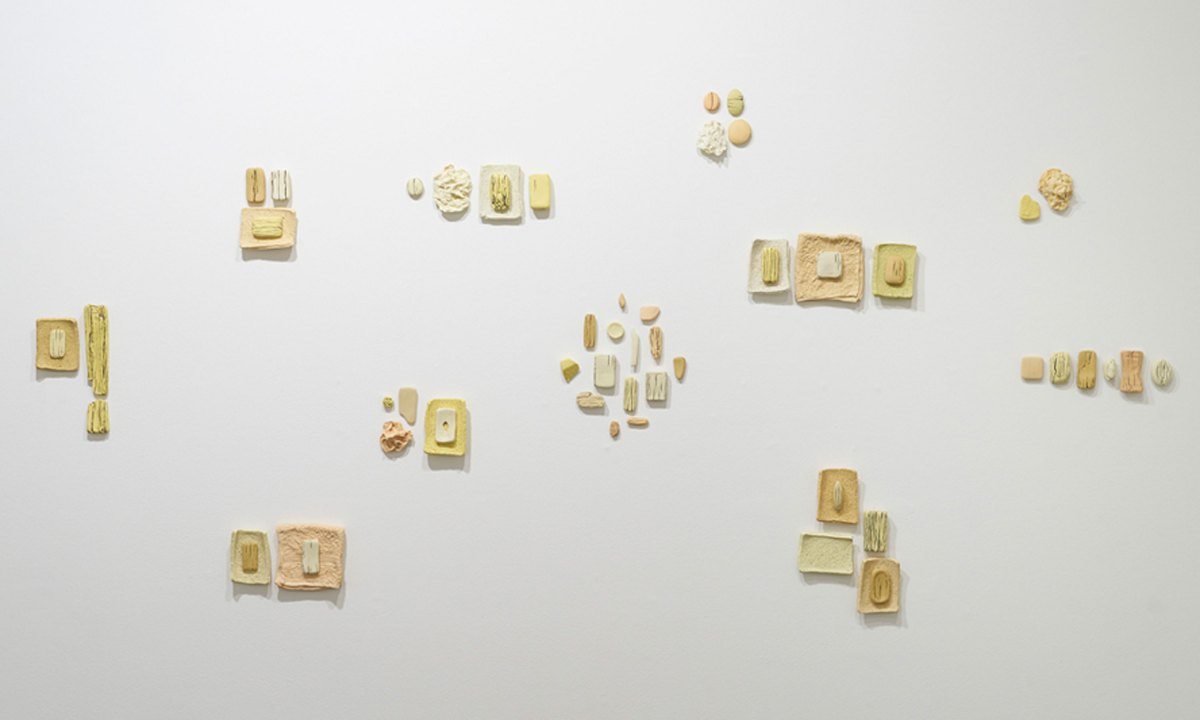
Sunny side: Honor Freeman’s Sunlight for a Pandemic. Photo: Sam Roberts Photography
Sunlight for a Pandemic is at Hugo Michell Gallery until April 10.




